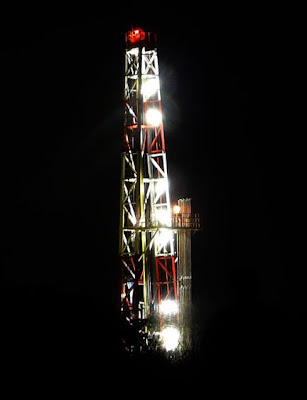A couple posts below mention golf courses. Yes, there are golf courses in the middle of Caracas. There is also a military airport, several freeways, a national park, a bunch of non-park forests that wend 10 km uninterrupted by streets, a tremendous military base, a couple spread-out, gated university campuses, and a collection of shopping malls.
These big blocks of land are dedicated to one function -- transportation, defense, shopping. They are fine, in their place, but for those who don't, for example, need to go to the mall or the university or the airport, they are mostly obstructions to urban life, rather than amenities. Since most of the time, most of the people don't need to do any one task, it's best to keep these things either small, like a single city block; or porous, meaning streets go through; or diversified, meaning that the mall might have some offices and housing above the roof; or stashed safely on the edge of the city like a medieval wall, blocking further sprawl.
The best example of this being done right is El Avila National Park and the adjacent Cota Mil freeway, which protect the north side of the city quite well against sprawl. There are no informal "invasions" of land uphill of the Cota Mil, and while there are some invasions of the Avila elsewhere, most remain small, for now. (The only big one is the government's "Socialist City" for which it grabbed 5% of the park and is building an experiment...no word yet on the urbanism of that place, though if past affordable housing projects are a guide, it will be lousy.) Centro Commercial Ciudad Tamanaco is another effort at mixed-use, with its mix of offices, shopping mall and freeway ramps. Sadly, having three land uses, none of which are active after 9 p.m., isn't enough to create an urban neighborhood. Jane Jacobs recommended at least 7; I don't know if there's a magic number but this isn't it. A couple malls, like Tolon that I mentioned below, fit nicely onto a block without destroying the city. And I can think of one example of a porous mall, San Ignacio, which has a street through the short axis of a long rectangle.
There are a bunch of problems with these single-use districts. They make short trips long. They force everyone -- trucks, buses, cars, pedestrians, bikes, horses -- onto just a couple of streets, which have often been turned into freeways. They reduce the space available for housing, contributing to the city's current pattern of having high-rises as the only type of home that's commercially available. The streets are left to themselves, free of storefronts full of curiosities, the glow of living spaces above, and friends chancing to meet. In short, they are the death of cities.
The government has responded with various ideas, none of which get to the heart of the issue. There is a plan to move the population south, off the coast, to the "Eje Orinoco-Apure," the well-watered band of land from the Andes on the west across to the Orinoco Delta on the Atlantic coast. This is based on the false idea that the city is crowded -- it's not, it's just being inefficiently used. Another idea is to convert the golf courses into housing. This could work wonders if the planning were right, as the Caracas Country Club, in particular, is plopped right in the middle of one of the best potentially walkable areas in the city, abutting Chacaito. There is plenty of shopping and work and mass transport; a bunch more housing could be just the ticket. This project, though, is on hold; some say it's because the homes on the golf course are now occupied by supporters of the government -- and they don't want low-income housing any more than the viejo riche. Perhaps the most hopeful program are the community planning councils, which for once give residents a voice in long-term planning of streets and land use. Still, for these to have the best effect, they need to exist in a matrix of visionary, participatory planning for the whole city. Locals won't usually think about the effect of their plans on the broader city unless forced to.







